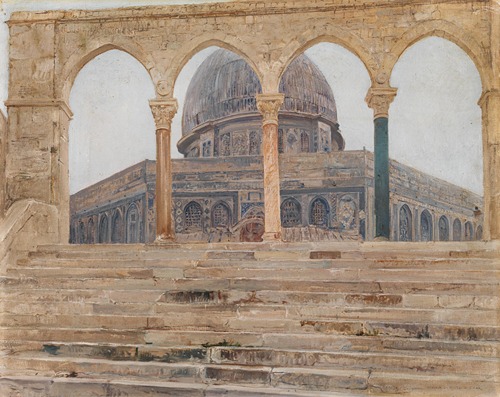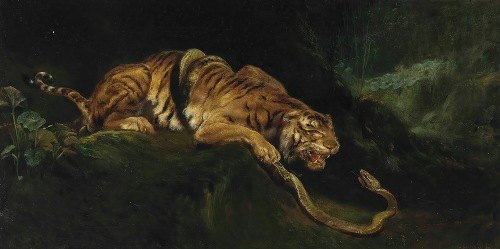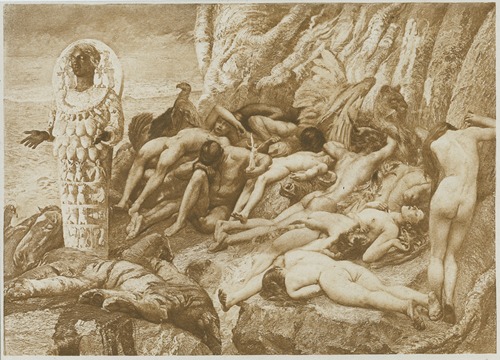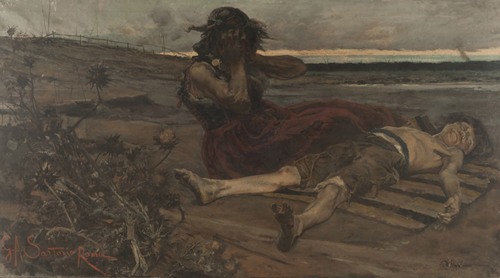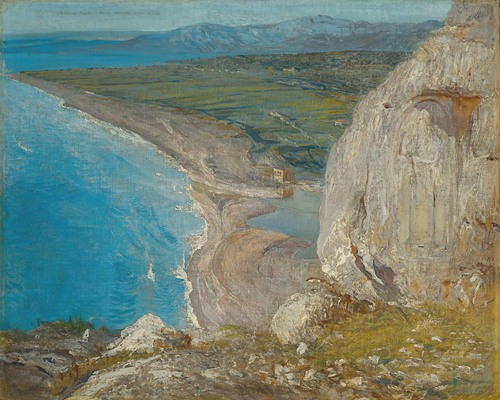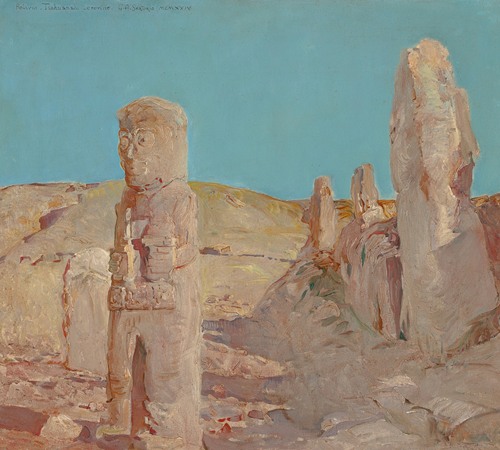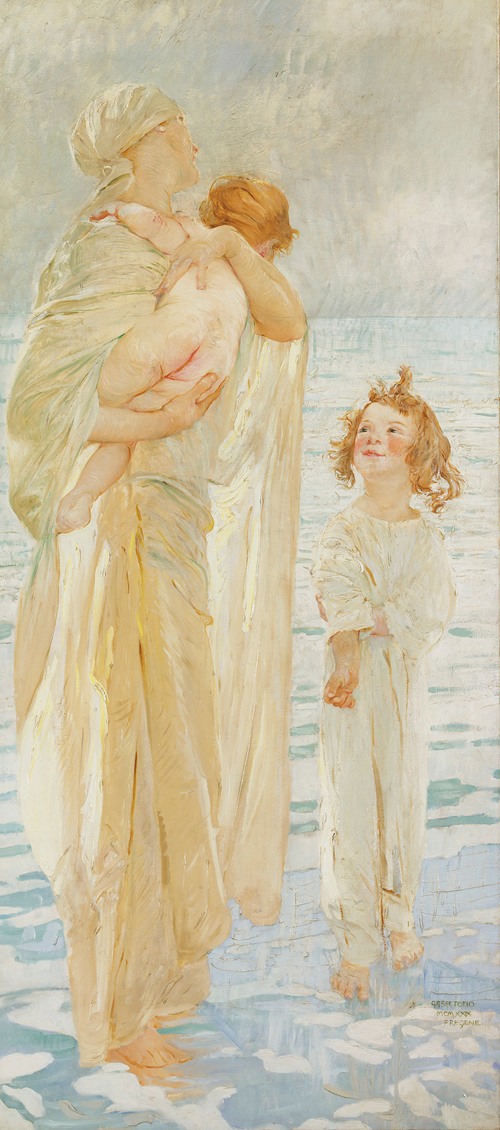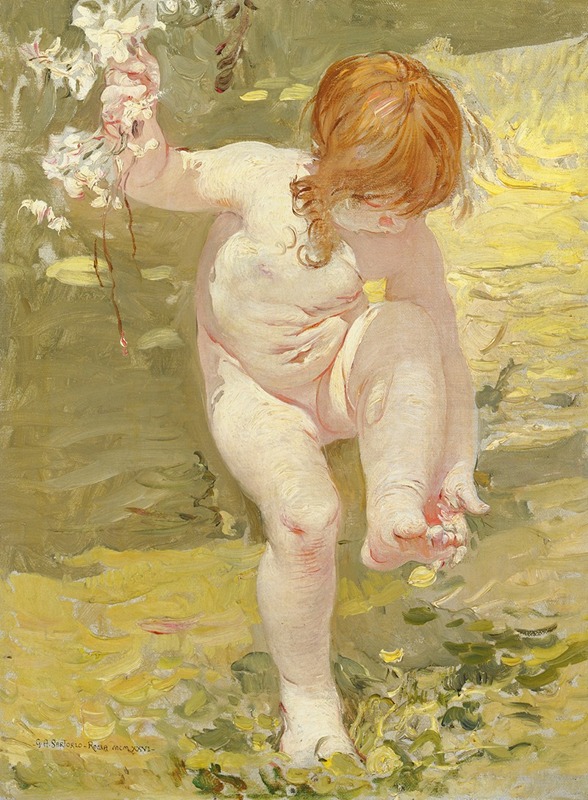
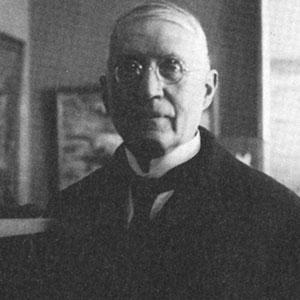
Giulio Aristide Sartorio was an Italian painter and film director from Rome.
Having attended the Rome Institute of Fine Arts, Sartorio presented a Symbolist work at the 1883 International Exposition of Rome. He formed friendships with Nino Costa and Gabriele D’Annunzio, and associated with the painters and photographers of the Roman countryside. He won a gold medal at the Paris Universal Exhibition of 1889 and met the Pre-Raphaelites in England in 1893. His participation in the Venice Biennale began in 1895 with the 1st International Exposition of Art of Venice, after which he taught at the Weimar Academy of Fine Arts from 1896 to 1898.
His period of greatest renown came at the beginning of the century, when he produced decorative friezes for the 5th Esposizione Internazionale d’Arte of Venice (1903), the Mostra Nazionale of Fine Arts (Milan, Parco Sempione, 1906) and Palazzo Montecitorio in Rome (1908–12). Wounded during World War I, he travelled extensively in the Middle East, Japan and Latin America during the 1920s and became a member of the Italian Royal Academy.
His most famous works are: Diana of Ephes and the slaves, Gorgon and the Heroes (1895–99) and a frieze in the Palazzo Montecitorio. He also collaborated with Gabriele D'Annunzio in a magazine entitled The Banquet (1895–98).
He directed the motion picture Il mistero di Galatea (1919), starring Marga Sevilla, his wife, who studied acting with Eleonora Duse.

